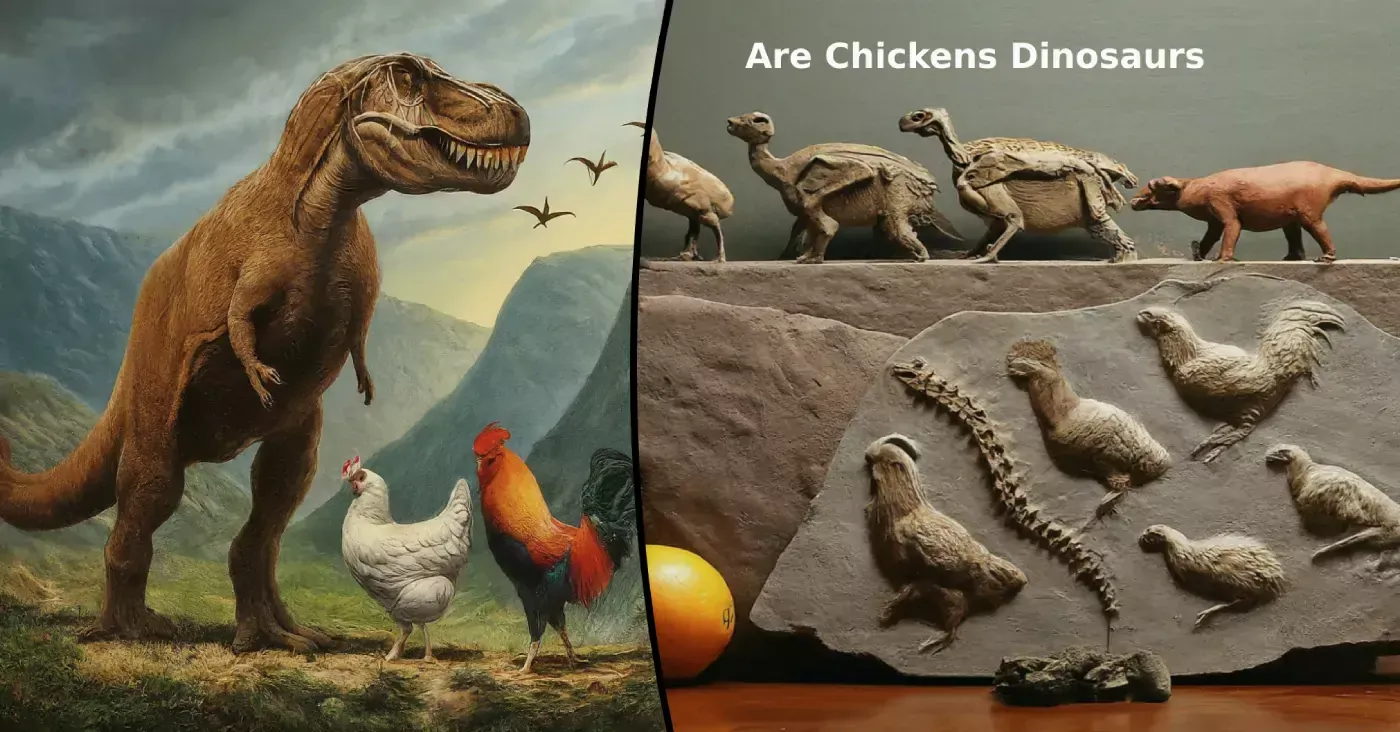Chicken Evolution: Are Chickens Dinosaurs
Yes, this is absolutely true! Overwhelming scientific evidence, including fossils and anatomical similarities, confirms that all birds, including chickens, are descended from theropod dinosaurs.
Theropods were a group of bipedal (two-legged) dinosaurs that walked upright and included some of the most famous dinosaurs like Tyrannosaurus Rex. Paleontologists have discovered numerous fossils that clearly show the close evolutionary connection between birds and theropods.
Evidence for Birds as Dinosaur Descendants
This conclusion is based on multiple lines of inquiry:
Fossil Evidence: Paleontological research has unearthed numerous dinosaur fossils exhibiting clear anatomical features associated with birds. These features include the presence of feathers and hollow bones. While the initial function of feathers in dinosaurs may not have been flight, their presence suggests a link to the structures that would later enable avian locomotion. Additionally, the skeletal structure of birds, particularly in the ankles, wrists, and wishbones, displays a remarkable degree of similarity to that of theropod dinosaurs. This shared morphology strongly suggests a common ancestor for both groups.
Skeletal Similarities: Comparative analysis of skeletal structures in birds and theropod dinosaurs reveals significant similarities in the ankle, wrist, and wishbone regions. These shared anatomical features are strong indicators of a common ancestor.
Molecular Evidence: Advances in molecular biology have provided further support for the dinosaur-bird connection. Studies comparing the amino acid sequences of proteins, such as collagen, in Tyrannosaurus Rex with various modern animals, revealed a closer match with chickens than any other extant species. This biochemical congruence reinforces the hypothesis of an evolutionary link between theropod dinosaurs and birds.
Other links between dinosaurs and birds
Brood Patch: Many birds have a specialized patch of bare skin on their bellies, richly supplied with blood vessels. This "brood patch" helps regulate egg and chick temperature during incubation. Interestingly, some theropod dinosaur fossils show evidence of similar structures, suggesting a shared trait linked to parental care behaviors.
Eggshell Microscopic Structure: Bird eggshells have a characteristic microscopic structure with protein fibers and calcite crystals arranged in a specific pattern. Analysis of dinosaur eggshells reveals a remarkably similar structure, strengthening the link between these two groups.
Nesting Behavior: Fossil evidence, including dinosaur skeletons found curled up in brooding postures, suggests that some dinosaurs may have exhibited nesting behaviors similar to those observed in birds today. This shared behavior further supports a close evolutionary relationship.
Feathers: Fossil evidence has revealed that some theropod dinosaurs had feathers, which is a defining characteristic of birds. These feathers may have initially evolved for insulation or display, and eventually played a crucial role in the development of flight.
Respiratory System: While the details are still being unraveled, recent research suggests similarities in the respiratory systems of birds and dinosaurs, particularly the presence of air sacs that may have played a role in gas exchange and even early flight adaptations in some theropod dinosaurs.
How did birds evolve from dinosaurs
The precise timeline and details of the evolution of birds from dinosaurs are still being actively investigated. However, the current understanding suggests the following:
Millions of years ago, a lineage of theropod dinosaurs emerged with some anatomical characteristics that foreshadowed the development of birds. These early ancestors likely possessed feathers and may have been capable of rudimentary gliding or using their forelimbs for balance.
Through natural selection, these bird-like features became more pronounced over time. Selection pressures favored adaptations that enhanced gliding capabilities, eventually leading to the development of powered flight using wings.
Alongside the evolution of flight, other adaptations further distinguished birds from their dinosaur kin. These include the development of beaks and lightweight bones, further specializing birds for their ecological niche.
Degree of Relatedness
While all birds are considered part of the dinosaur lineage, further classification divides this lineage into distinct branches. Chickens belong to the theropod group, just like Tyrannosaurus Rex. However, chickens represent a lineage of theropods that survived and continued to evolve, acquiring their own unique suite of characteristics.
Modern Dinosaurs
Calling chickens "modern dinosaurs" isn't technically inaccurate, but it can be confusing. It's more precise to say they are descended from dinosaurs and have continued to evolve along their own path within the dinosaur lineage.
Conclusion
In conclusion, the weight of paleontological, anatomical, and molecular evidence overwhelmingly supports the classification of birds, including chickens, as descendants of theropod dinosaurs. While chickens exhibit distinct morphological adaptations compared to their dinosaur ancestors, they represent a lineage within the dinosaur clade that has successfully diversified and thrived over millions of years.



%20(1).webp)





